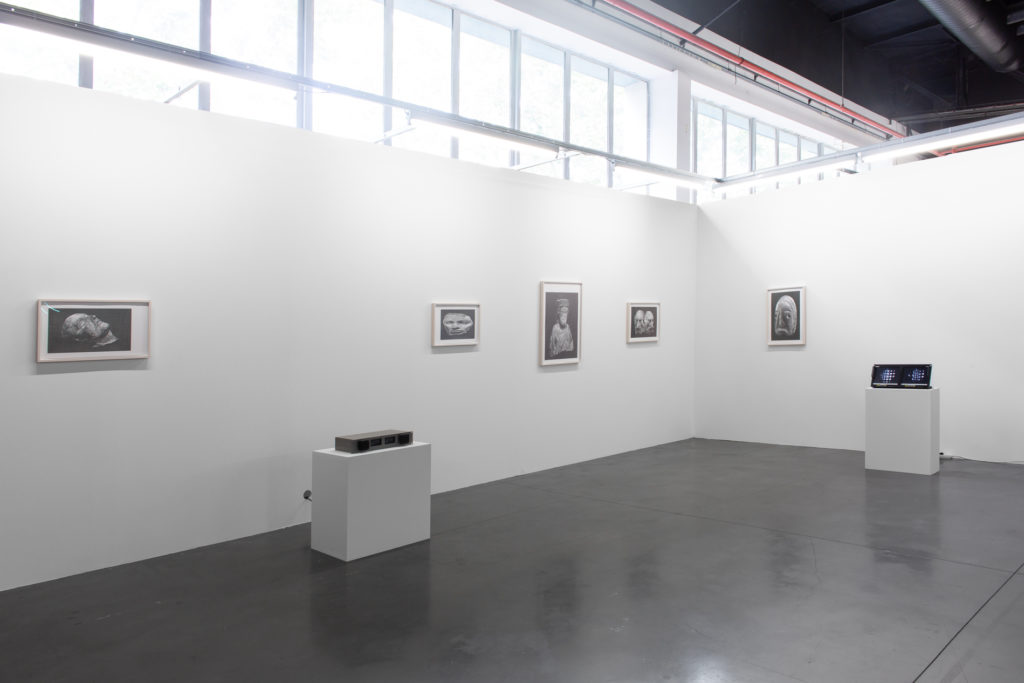Roger Pailhas Prize
Paying tribute to the Marseille-based gallerist, known for his daring and innovative booths within the most prestigious art fairs, Art-o-rama organizes since 2015 the Roger Pailhas Prize awarded by a committee of collectors and art professionals.
It rewards the best curatorial project by reimbursing the costs of participation at the fair.
Roger Pailhas
Roger Pailhas inaugurated his first gallery in Marseille (Cours Julien area) in 1986 with a group show that gathered Daniel Buren, Gilbert Della-Nocce, Toni Grand, Jannis Kounellis, Sol Le Witt, Mario Merz, and Bruce Nauman.
In 1990, he opened a second space in Paris with a solo show by John Knight. In 1996 the Marseille-based gallery moved to the Vieux-Port (old harbour central area) into a 1,000sqm space. He closed the Parisian gallery in 1998 and decided to focus on Marseille instead.
In 1996 he created Art Dealers, an original contemporary art fair where he gathered, within the gallery’s space, 8 new international galleries each year.
Meanwhile, he participated in some of the most prestigious international art fairs such as Art Basel, Fiac, and the Armory Show, where he offered, with the complicity of his artists, among the most ambitious and adventurous booths. Samuel Keller himself said that Roger Pailhas’ booths inspired the Statement section of Art Basel. The gallery and Art Dealers ceased to exist when Roger Pailhas passed away in 2005.
2024 laureate : Zyrland Zoiropa, Berlin
Liam Allan, Burkhard Beschow
Zyrland Zoiropa presented in 2024 artworks by two artists, Liam Allan and Burkhard Beschow. Both artists create delicate objects exploring the complexity of ‘place’.
Drawings by Liam Allan are immensely detailed depictions of unspecified historical objects—artefacts from anonymous museum collections. The drawings are laboriously detailed; the intricate pencil marks are clearly visible up close but form a photo-like image from a distance. The artworks are titled after nations and peoples unrelated to the depicted objects, assigning a meaning to the objects that is evidently false.
Accompanying Allan’s drawings are mixed-media sculptures by Burkhard Beschow. In Beschow’s art practice, he engages in ongoing projects focused on specific places. In his last exhibition, for example, he created sculptures inspired by the German town ‘Bitterfeld,’ once the most polluted town in Europe. Beschow’s mixed-media sculptures capture the essence of a place, often post-industrial wastelands. Raised in East Germany, he has a fascination with the societal and economic transitions that occurred after 1989—how the post-GDR landscape was transformed and the ensuing entropy and sense of abandonment that followed.
At the Zyrland Zoiropa presentation for Art-O-Rama, framed pictures by Allan adorn the walls, while mixed-media sculptures by Beschow add a three-dimensional element. Overall, the presentation raises questions about how objects can convey meaning related to place or how meaning, real or imagined, is attributed to objects from specific places.
Laureates
2023 : Galeria Mascota, Mexico, with Michael Ross
2022 : Gilles Drouault galerie, Paris, with Jason Dodge
2021 : Exo Exo, Paris, with Gaspar Willmann
2019 : VEDA, Florence, with Dominique White




